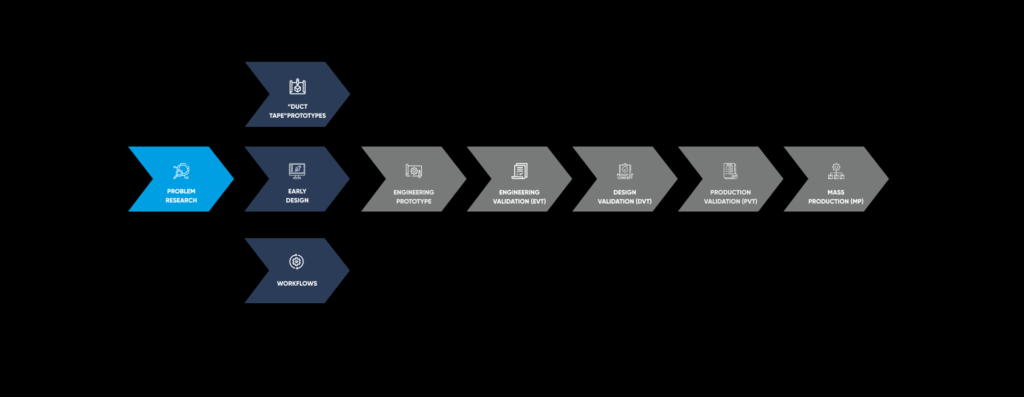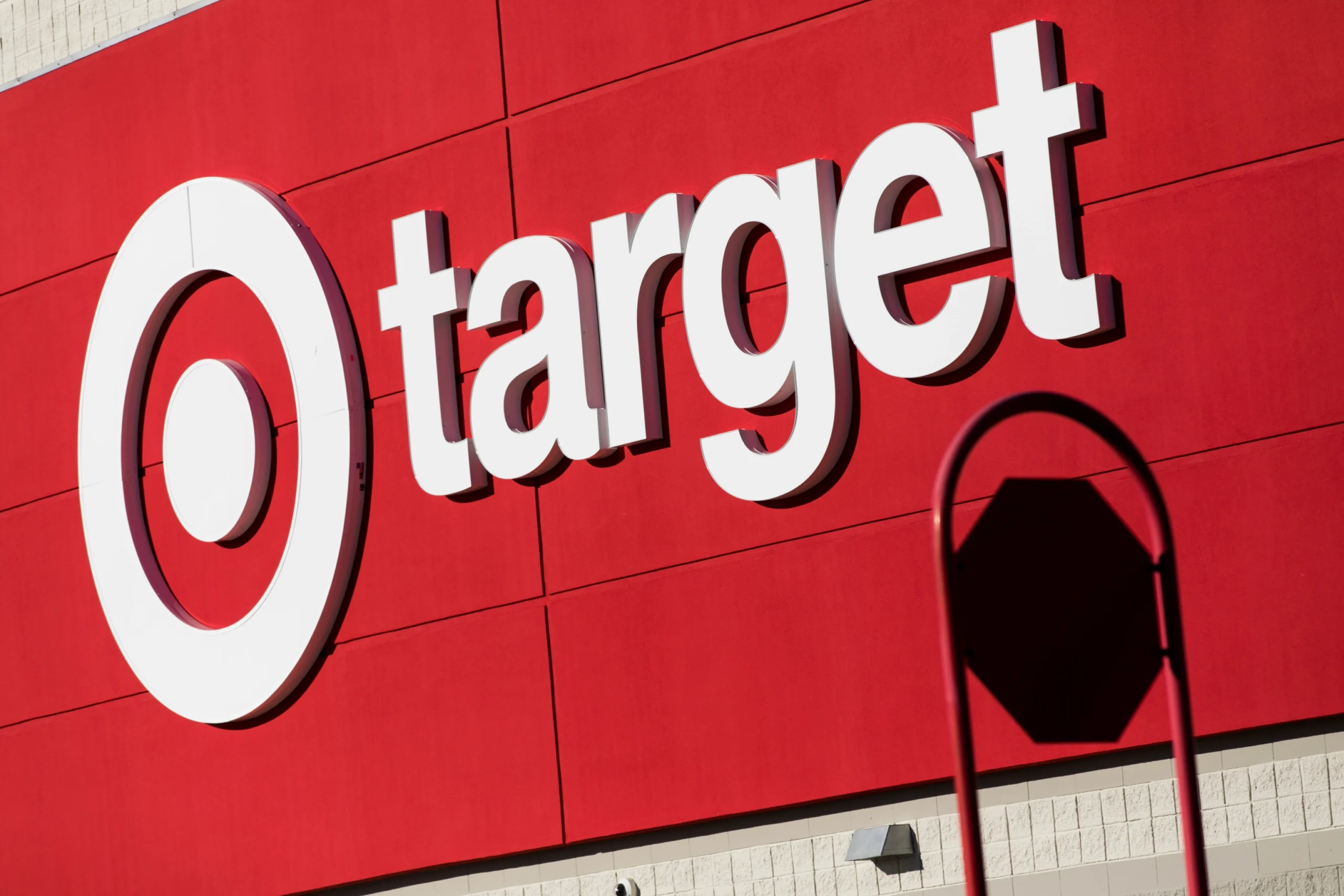The journey from a simple sketch on paper to a tangible, state-of-the-art device combines creativity, precision, and technological expertise. But how is it accomplished? Selling a product to retail involves numerous steps, spanning from idea conception and production to placing it on store shelves. Depending on factors like product complexity, manufacturing timelines, distribution logistics, and negotiations with retailers, this process can take anywhere from several months to 1-2 years, or even longer.
Beginning with idea generation and market research to identify market gaps, companies go through multiple stages of product development before launching the product. Let’s delve into how smart devices evolve from initial concepts to being available for purchase in stores.

Research phase
Before diving into ideation, it’s essential to grasp market demand. While you might create another wheel, what if your audience really needs wings? Thoroughly researching your potential clients and competitors enables you to understand your target audience’s needs and identify market gaps where demand remains unmet. When clients come to AJProTech, we do a deep dive into their expectations and market demand. Usually, we expect that potential customers have already done some homework, studied the market and know their client and market demand. Many engineering and design firms provide services such as feasibility studies and design research, which are invaluable tools I strongly advise utilizing. These resources can offer deeper insights and furnish a more comprehensive understanding of the costs associated with product development.
Being acutely sensitive to market demands and trends, and being self-critical, is the recipe for success. Right from the ideation phase, we caution clients about potential product risks and opportunities. Out of numerous brilliant ideas, only a handful evolve into products that consumers truly desire.

Ideation and design
All man-made creations start from a simple concept. The journey from initial drafts to fully-realized products that shift our understanding of advanced devices is honestly awe-inspiring. From primitive pencil drawings to complicated prototypes, devices are driven and shaped by industrial, mechanical, and electrical engineering to reach their full potential and function. Depending on the complexity of the product, this stage may take from several weeks to about 12-15 months.
As the design matures, it witnesses a dramatic transformation from untamed imagination to finely detailed technical designs. Designers work meticulously to create digital depictions that are both visually appealing and intuitively functional. In tandem, engineers dive into an unseen universe, building the complex technology that breathes life into the device. Prototyping is the forge in which these ideas are tested and honed.
Prototyping is a multi-phased process, each step adding layers of complexity until the device achieves its final form. During the earlier stages of prototyping, it’s more efficient to spot and correct any defects, saving time and resources. This process requires significant focus, time, and financial investment. We suggest our clients to collaborate with a skilled engineering firm, like ours, instead of embarking on this journey alone. Each refined iteration brings us one step closer to a flawless product.
As the product emerges from this rigorous process, it stands ready for mass production.
Mass Production
Mass production usually starts with batches of 5000 units or more. In this phase, detailed analysis of failures and product yield is carried out, while the logistics and supply chain management are streamlined for efficiency. A standard benchmark for this stage involves sourcing materials worth approximately 1 million from the Contract Manufacturer, ensuring readiness for large-scale production.

Branding and market testing
This is my favorite part of this path, and I believe that branding efforts should commence concurrently with the development of the product. Branding and market testing serve as the heartbeat of the product’s initial journey, ensuring that once a device hits the market, it does so with a strong, market-tested brand identity that captivates and converts the target audience. As the product begins to take shape based on thorough research and a clear understanding of market demand, branding strategies can evolve in tandem, mirroring the product’s maturation and refinement.
When the first prototypes are ready, reflecting all the research and design efforts, it’s the perfect time to start market testing. This phase is not just about assessing the functionality or the aesthetics of the product but also about evaluating its market viability and how it resonates with potential users.
To test devices effectively, especially during the prototyping phase, it’s advantageous to target a diverse yet relevant audience. This group should ideally be representative of the product’s end users, encompassing early adopters, tech enthusiasts, or specific demographics depending on the device’s intended use. Engaging with such an audience can provide valuable feedback on the device’s usability, appeal, and potential improvements.
During this stage logo, messaging and packaging design are developed. Feedback from this testing phase is extremely important for identifying strengths and areas of improvement, allowing for refinements to the logo, messaging, and packaging design before finalizing them for the launch.
Marketing and Promo
Marketing and promotion are absolutely essential for educating potential users about your product and driving sales. The strategies used during this phase can have a major impact on how well your product is received in the market and how successful your sales are. In today’s tech-savvy world, marketing approaches are diverse and encompass both traditional and cutting-edge methods to effectively connect with and engage target audiences.
Depending on the nature of your business, be it a startup or a larger company, crowdfunding platforms have emerged as a powerful tool, particularly for startups and companies launching innovative consumer electronics. These platforms play a key role by providing a mix of funding, market validation, and promotional opportunities. When combined with a well-rounded marketing strategy, they can greatly boost your product’s launch and overall success.
A well-coordinated marketing strategy comprises elements like content marketing, influencer partnerships, social media engagement, and PR outreach – all tailored to fit your budget and available resources.
Retailer negotiations and launch
Identifying potential retailers that align with your target market is the next challenging step. You can have an outstanding project but all is in vain if you don’t pitch your product to retailers, highlighting its unique selling points and potential benefits for their customers. Long way negotiating begins: pricing, placement, promotional support are the starting points only. After all terms are agreed you need to fulfill orders from retailers and maintain adequate inventory levels to meet demand. So, here accuracy plays a crucial role, sales data must be monitored and adjusted with production and inventory levels accordingly.
Launching a product is very close but before one more principal point should be done. Think about developing marketing strategies to raise awareness and drive sales, including advertising, promotions, and social media campaigns. Collaboration with retailers on promotional activities such as in-store displays, demonstrations, or joint marketing efforts will play into the hands too. And then you can execute the product launch, including any promotional events or marketing initiatives. The most intense period is behind but we advise our clients to track sales performance and gather customer feedback for continuous improvement. It will guarantee to keep a high position on the always changing market.
Hardware is hard, but it’s worth it. By utilizing smart marketing strategies and embracing the latest technologies, companies can successfully navigate the intricate path from idea to product on store shelves, guaranteeing a strong and memorable product launch.
This guest blog post was provided by Maria Dobroskokina from AJProTech, an award-winning IoT product development studio for consumer electronics development. If you have an innovative idea and want to design a device, contact the AJProTech team today to get more information on the services that they provide.



